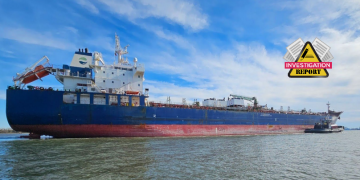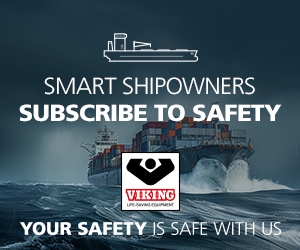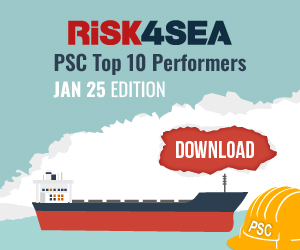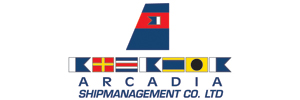Lloyd’s Register (LR) and Lloyd’s Register Foundation have issued the Global Maritime Trends 2025 Barometer, finding that the industry is falling behind on its net-zero ambitions.
Tracking five key areas—maritime trade, energy, vessels, ports, and people—the GMT 2050 Report, published in 2023, had provided a data-driven view of how the industry is navigating the energy and digital transitions. It highlights emerging trends by benchmarking progress toward four potential future scenarios. These scenarios are based on a matrix that considers the rate of technology adoption across society and global co-operation on climate change, and they are as follows:
- Just, gradual transition
- Rapid, tech-driven transition
- Regionalized and fragmented transition
- Delayed transition
As GMT Barometer 2025 reveals, progress on decarbonisation and digitalisation places the maritime industry firmly within the delayed transition future by the end of this decade. Despite some advancements, overall progress in the maritime sector’s energy and digital transition remains significantly misaligned with the industry’s net-zero ambitions.

Key findings
-
Regulatory uncertainty is deterring shipowners from making long-term investments, leading to a “delayed transition” that could derail decarbonisation targets and digital parity with land-based industries.
-
Regulatory mechanisms such as carbon pricing, emissions mandates, and incentives for green investments are essential to accelerate worldwide adoption.
-
The orderbook for alternative-fuelled ships grew by over 50% in 2024, but global energy production still remains heavily reliant on fossil fuels, with energy transition scores ranging from 24% to 30% alignment with decarbonisation targets.
-
Digital progress in the maritime industry has improved (32-48% alignment), but it still lags behind land-based industries. Key barriers include data standardisation, interoperability, and a widespread lack of digital skills among seafarers and shore-based teams.
-
A critical gap in workforce development was found, with the People component scoring only 27% alignment on energy transition and 32% alignment on digital transition.
-
Training programs remain insufficient to prepare seafarers for operating vessels powered by alternative fuels and implementing new digital technologies.
-
Recruitment struggles persist due to an ageing workforce and declining interest in maritime careers.
The role of digitalisation in the workforce
Within the industry, digitalisation efforts, such as enhancing connectivity and automation, hold unrealised value in improving the productivity and well-being of seafarers and other workers—important considerations given the challenges of tight labour markets. As increasingly digitally proficient and environmentally conscious young professionals enter the workforce, shipping has an opportunity to attract talent by showcasing career opportunities that bridge the digital and physical worlds, from developing software that tangibly reduces industrial GHG emissions to operating some of the world’s largest vessels. However, the GMT Barometer 2025 reveals fundamental workforce challenges, including gaps in safety standards enforcement, labour rights, diversity, and access to new labour markets—factors that impact both current employees and the industry’s ability to attract new talent.
Progress in ports and infrastructure
Common themes are also evident in the Ports analyses, where digital and environmental progress remains largely confined to advanced ports and port clusters. The growth in smart ports is a positive for the sector, as digital technologies have proven their ability to unlock significant efficiency improvements and related emissions reductions. However, the slow pace of port infrastructure development and the challenges of digital projects with multiple stakeholders necessitates an acceleration of action. Significant challenges remain in place beyond the immediate influence of the industry, as fossil fuels remain fundamental to world energy production, shaping seaborne trade demand.
Achieving a net-zero future by 2050
To achieve a credible trajectory toward net zero by 2050, the maritime industry must confront its challenges head-on, translating commitments into concrete actions. Agreements, targets, and strategies must be transformed into measurable achievements that generate sustained momentum. Only through decisive action, collaboration, and innovation can the industry ensure a sustainable and resilient future.
Call to action
As GMT Barometer 2025 reveals, progress on decarbonisation and digitalisation places the maritime industry firmly within the delayed transition future by the end of this decade. Despite some advancements, overall progress in the maritime sector’s energy and digital transition remains significantly misaligned with the industry’s net-zero ambitions.
Challenges such as limited technological adoption, misaligned stakeholder interests, and insufficient regulatory frameworks have hindered momentum. Immediate action is needed to address these barriers, foster collaboration, and accelerate the sector’s transition toward a sustainable, net-zero future.
The barometers outlined in this report serve as an urgent call to action to stakeholders throughout the maritime industry and beyond. Present efforts and investments are insufficient to reach net zero by 2050.
If the industry continues on its current trajectory, it will fall considerably short of its decarbonisation targets, exacerbating climate-related risks to maritime operations, the global economy it relies on, and the societies it serves.
This is a critical moment for the maritime sector. The industry has demonstrated its commitment to change, but the reality is that without regulatory clarity and global alignment, investment and innovation will remain hesitant. The Global Maritime Trends Barometer serves as a call to action—policymakers must step up to ensure regulation provides the certainty the industry needs to accelerate its transition
… said James Frew, LR Advisory Director.




































































